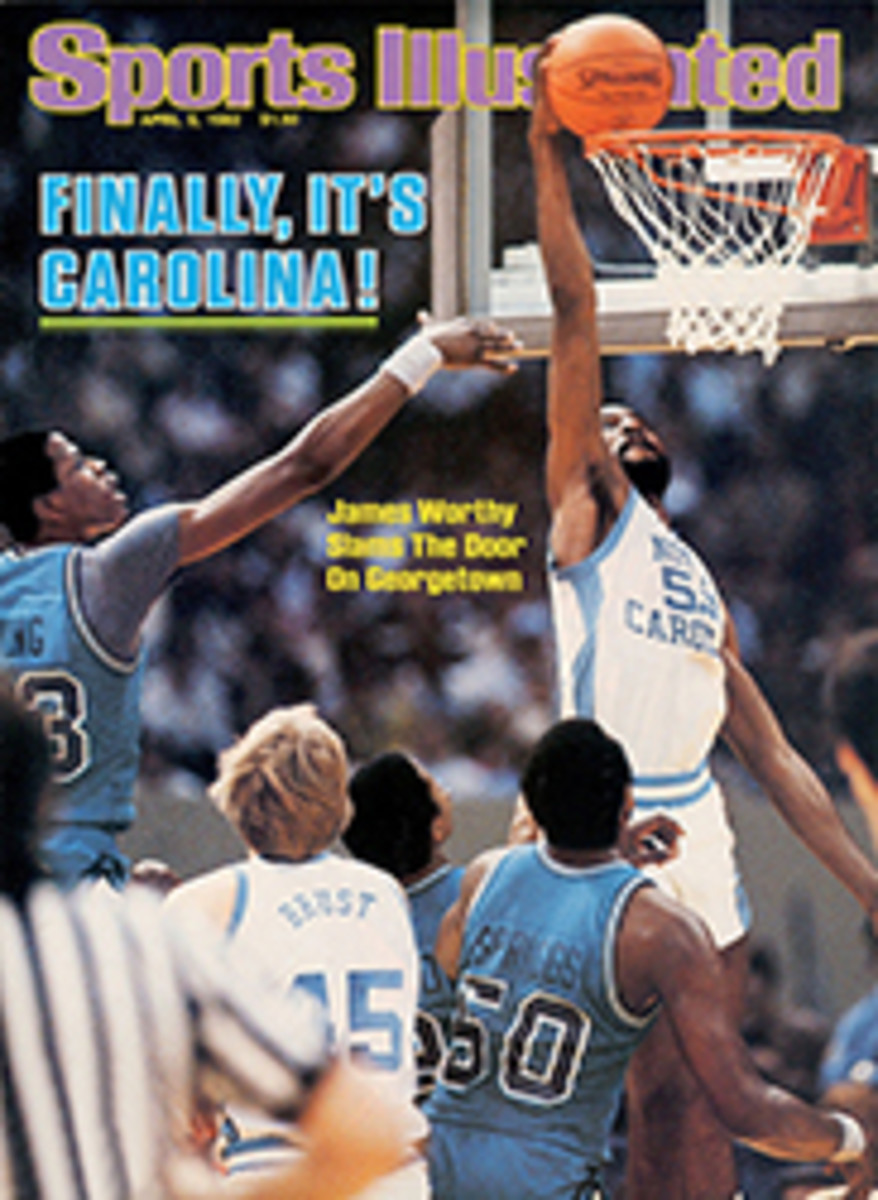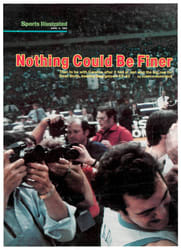
NO ONE YELLED "KILL THE UMP" WHEN AMANDA CLEMENT WAS A MAN IN BLUE
One day in 1905 the manager of a semi-pro baseball team in Hudson, S. Dak. needed someone to umpire a game. He didn't have to look far. Living in the farmhouse across the street from the local sandlot was a 17-year-old known to have a level head and a good knowledge of the game. This was how the six-year career of Amanda E. Clement, baseball's first woman umpire, began. By the time her career ended, the Lady in Blue, as Clement was called, had become one of the highest-paid umpires in the West, making as much as $25 a game, and she had been recruited, albeit unsuccessfully, by major league presidents Ban Johnson and Harry Pulliam to call games in the East.
"She did an excellent job of umpiring, and she demanded the players' respect. If they didn't like it, out they went," says E.F. (Clem) Clement, 69, a nephew of the late Mandy Clement. Clem is the curator of his aunt's baseball memorabilia—a ball-strike indicator hand carved from ivory, a dilapidated scrapbook and a smudged, autographed baseball dated 1908—which have been donated to the Hall of Fame in Cooperstown. The baseball is Clem's favorite item. It has POOR GALLAGHER penned on it. "I'd love to know what happened to poor Gallagher," says Clem, "because I'll bet she threw the son-of-a-buck out of a ball game."
Amanda, 5'10", was a good enough athlete to play first base on Hudson's semipro team when the men were short on players. She was tough, and the men knew it. Clem and his brothers played catch with their Aunt Mandy when they were adolescents and she was about 40, and Clem recalls, "We used to run inside, pretending to get a drink of water, and instead put some sponge in our gloves because she threw so hard."
The one thing Amanda lacked when she was called upon to umpire her first game was her mother's permission. Harriet Clement was no soft lady, having been one of the first women to settle in the town of Eden in the Dakota Territory. But she was appalled at the idea of her daughter umpiring. With a diplomacy that would later serve her well, Amanda persuaded her mother to let her work the game.
Clement called as many as 60 games a season in the Dakotas, Minnesota, Iowa and Nebraska over the next six years. She proved to be a popular umpire. Clever promoters drew large crowds to baseball tournaments by giving Clement top billing. Posters calling Clement THE ONLY LADY UMPIRE IN THE WORLD made her sound like a circus attraction, but she was able to earn enough as an umpire to put herself through the University of Nebraska as a phys ed major. According to Clem, Amanda was proudest of a 17-inning marathon she worked in 100° heat. The game was called at sundown with the score tied 1-1.
It seems odd now that a woman could have been a successful ump 75 years ago when she wouldn't be welcomed in the umpiring ranks today. But Clement's serious supporters claimed that a lady umpire could clean up the game and "make gentlemen out of the players." Stationed behind the mound, as was the custom then, so she could also call plays at the bases, Clement needed no protective equipment. Her uniform was a full-length blue skirt, black necktie and white blouse with UMPS stenciled across the front. She tucked extra baseballs into the wide elastic waistband of her skirt. With her waist-length dark hair tucked up inside a baseball cap, Clement was described as "an inspiring sight" and "more than just a pretty face" by local newspapers. "She is death on balls and strikes," one reporter wrote.
Clement was a no-nonsense woman. A Congregationalist, she lodged with local ministers when working away games and refused to umpire on Sundays. She once left a game after two innings because a player swore. But that kind of confrontation was rare, and the players were respectful. Janet Mills, a friend of Clement's for 30 years, recalls, "Amanda always marveled that they were so polite. They never said, 'Kill the umpire.' They said, 'Beg your pardon, Miss Umpire, but wasn't that one a bit high?' "
Clement's reputation grew as the news of the South Dakota umpress traveled East. A journalist in Boston called her a "heartless arbitrator" and claimed she had refused more than 60 offers of marriage from players. "I am wedded to baseball," he quoted her as saying. "I think I can be of more service to humanity by correcting the tendencies of the men who use horrid language when things don't suit them on the diamond." She never did marry, but Mills feels that Amanda would never have said she was wedded to the game.
Clement also had some athletic successes outside of baseball. They're difficult to track down because few records on female athletes were kept then. She is supposed to have won tennis championships in Iowa and South Dakota, to have set unofficial world marks in the shotput, sprints and hurdles while at Nebraska and to have established a women's world record in 1912 by throwing a baseball 275 feet. In addition, she taught ballet to the University of Wyoming football team during World War I and became the first female high school basketball referee.
Clement continued to call baseball games occasionally until she was in her early 40s. But after those first six years her real interest shifted to coaching, and she organized men's and women's baseball teams in colleges and YWCAs in the Midwest. She eventually became a social worker. After she retired in 1966, she rarely missed a baseball game on the radio or TV. Smoking cigarettes and keeping score, she rooted for the Twins—and, no doubt, the umps—until she died in 1971.
ILLUSTRATION
MARK FISHER

